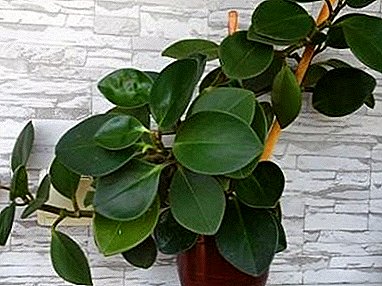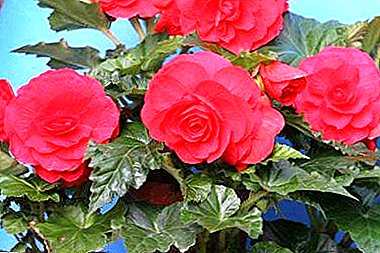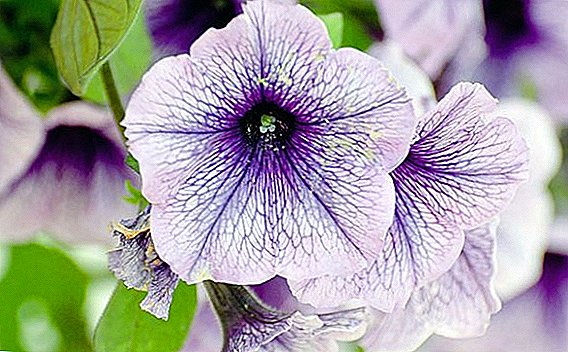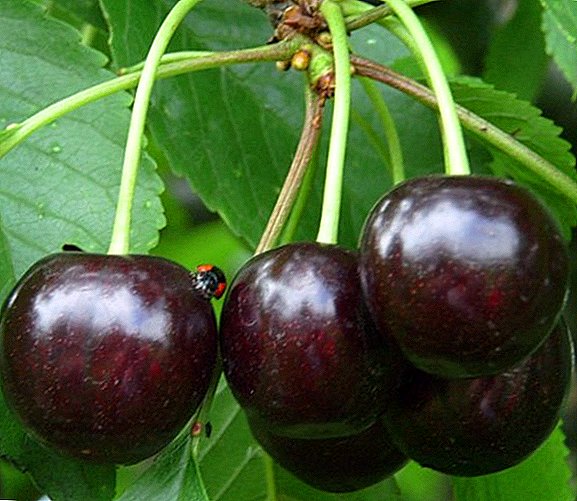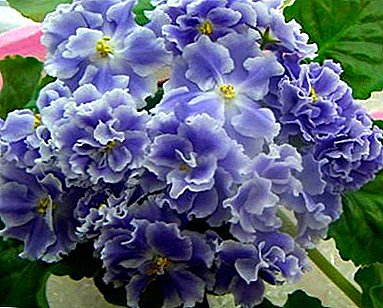
On garden plots, in room conditions, and also on city beds, many species of ornamental plants delight people with their flowering. With attentive care and care from the florist flowers give aesthetic joy.
A common preference for flower lovers is violets. Violet is a genus of violet plants. More than five hundred of their species are known, and they grow mostly in the Northern Hemisphere, in the mountains, and in temperate climates.
General description of the variety
This variety can be called unpretentious, but certain conditions should be observed that prevent the occurrence of diseases and increase the speed of flower development. It has a long and abundant flowering (up to a year), as well as fast and massive reproduction. He has a beautiful hat and resistant flower stalks.
When and how did it appear?
The sort of violets "Blue Fog" appeared in 2001. This variety of these flowers was invented and bred by breeder Konstantin Morevym (we described the other varieties bred by Morev in detail in a separate article). Homeland of all violets is the East African province. By the name of the governor of the province, these flowers are also called "Saintpaulias".
Appearance: leaves, flowers
Violet leaves look like velvet. The shape is ovoid, oval, round or with a heart-shaped base. Given the appearance, the outer part of the sheet takes on different colors, from light to dark green. The inner part of the surface is light green or lilac, with pronounced veins.
The main feature of the variety "Blue Fog" is light blue and blue double flowers.
The edges of the petals are framed in white. Inflorescences of heavenly shade have a large size. They have a spherical shape. Serrated leaves.
Peduncles long and strong. Flowers rise above the leaves. On one peduncle 3 - 4 buds. During summer flowering, the flowers are distinguished by a more saturated shade of blue and they may not have a white border. By winter, the color changes to the typical one for this variety.
A photo
Next you can see the photo and description of the appearance of the violet "Blue Fog"





A small video review of violet varieties "Blue Fog":
Distinctive features of care
With careful care and properly selected soil plant blooms 10 months a year. At the same time violets bloom profusely. Even in young flowers, a blue cap is formed.
Rules for the care of violet "Blue Fog":
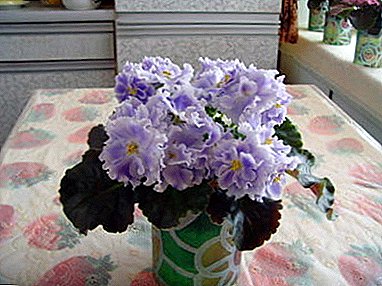 A constant temperature from 20 to 25 ° C is required.
A constant temperature from 20 to 25 ° C is required.- There should be no draft in the room.
- To avoid sunburn in the room should be present shading.
- It is also necessary to control the humidity, any fluctuations in 50-60% of the norm can lead to diseases. In a dry microclimate the flowers wither. You can buy mini table.
- Correct watering is important, for this purpose, used distilled unboiled water is slightly warmer than room temperature. Watered in a thin stream, not splashing water on the leaves, no more than twice a week.
There are several factors that affect the timing of irrigation, it is the size of the pot, season, temperature and humidity of the room and flowering time. In spring - autumn, the plant should be moistened more often. A portion of the water usually takes Saintpaulia once every 3 to 4 days.
With an excessive amount of moisture, the root system of the senpolia can start to rot and the flower becomes ill. You can notice it on the brown spots on the leaves.
- Dust may accumulate on the leaf surface of violets. It should be washed, preferably once a month. This can be done by taking the plant pot to the bathroom and putting it under a stream of warm water. To dry after this is not necessary.
- If there is a shortage of nutrients in the soil, the flowers need to be fertilized. To do this, use liquid organic matter, thin sticks and tablets. When flowering add dressing and repeat this procedure every season, if necessary.
Nuances when planting and growing, possible diseases
Some conditions are required for growth and good flowering of this plant.:
- Soil mixture for cultivation should be loose. Its composition: turf soil (3 parts), peat (5 parts) and sand (1 part). This soil mixture can be found in specialized stores.
- The soil should also be nutritious and moisture-consuming with a slightly acidic pH of 5.5 - 6.5. You can improve store soil by adding perlite. Adding mineral chips improves the soil structure, making it easier.
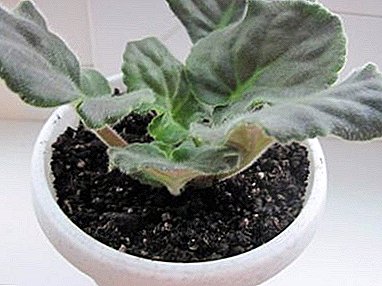 The main requirement for the cultivation of violets is the ability of the soil to pass air. The plant's root system needs a constant supply of oxygen for life.
The main requirement for the cultivation of violets is the ability of the soil to pass air. The plant's root system needs a constant supply of oxygen for life.- After about two months, it is time to feed, as the nutrient reserves of the soil are running out by that time. Fertilizers vary in purpose. Nitrogen fertilizers are used for growing rosettes, potash fertilizers provide health. Concentrated complex mineral fertilizers can fully provide flowers with nutrition, because the elements in them are in an easy-to-digest form.
- You need to decide on the choice of capacity for the flower, its size and material. Suitable containers of plastic and ceramic. The plastic pot is light and durable, but it does not allow air to pass through. In large capacity, the plant develops the root system, not seeking to bloom.
For the abundant appearance of peduncles requires a small pot. At the bottom of the pot should be openings for draining excess water.
- For a comfortable existence, violets require a large amount of light, but not direct sunlight. Direct sun exposure causes yellow spots on the leaves. Pots with these flowers are placed on the east or south-east side, racks are often used (in this case, the plant is illuminated with fluorescent lamps). The distance from the flower to the lamp should be 25 cm from the flower.
- An adult plant needs a transplant to a new place. Initially, containers with a diameter of about 4–5 cm are used, but when the violet grows, it becomes cramped. After six months, a 9 cm container is needed. Young plants require transplantation 2 times a year, in spring and autumn. Then change the pot once a year. If Saintpaulia is not transplanted, salts accumulate in the soil, preventing the roots from feeding. In the process of transplanting diseased and dried leaves are removed.
- Three years after planting, violets lose their ornamental qualities and the plant becomes more vulnerable to disease. Cutting and rooting the upper part of the plant, it can be rejuvenated. Slices are treated with a special preparation.
Violet can suffer from diseases and parasites. Among the enemies of violets:
- spider mite (Fitoverm and Actellic are used against it);
- whitefly (insecticidal);
- mealybug (laundry soap);
- powdery mildew (fungicide);
- fusariosis (process the soil with a solution of copper sulphate).
Conclusion
Fans of indoor plants will not leave indifferent the lush and abundant bloom of violet "Blue Fog". It is easy to grow at home, but for the active development of the flower requires the fulfillment of several conditions. Saintpaulia should be protected from direct sunlight, moisture fluctuations, drying, disease and non-nutritive soil.


 A constant temperature from 20 to 25 ° C is required.
A constant temperature from 20 to 25 ° C is required. The main requirement for the cultivation of violets is the ability of the soil to pass air. The plant's root system needs a constant supply of oxygen for life.
The main requirement for the cultivation of violets is the ability of the soil to pass air. The plant's root system needs a constant supply of oxygen for life.

